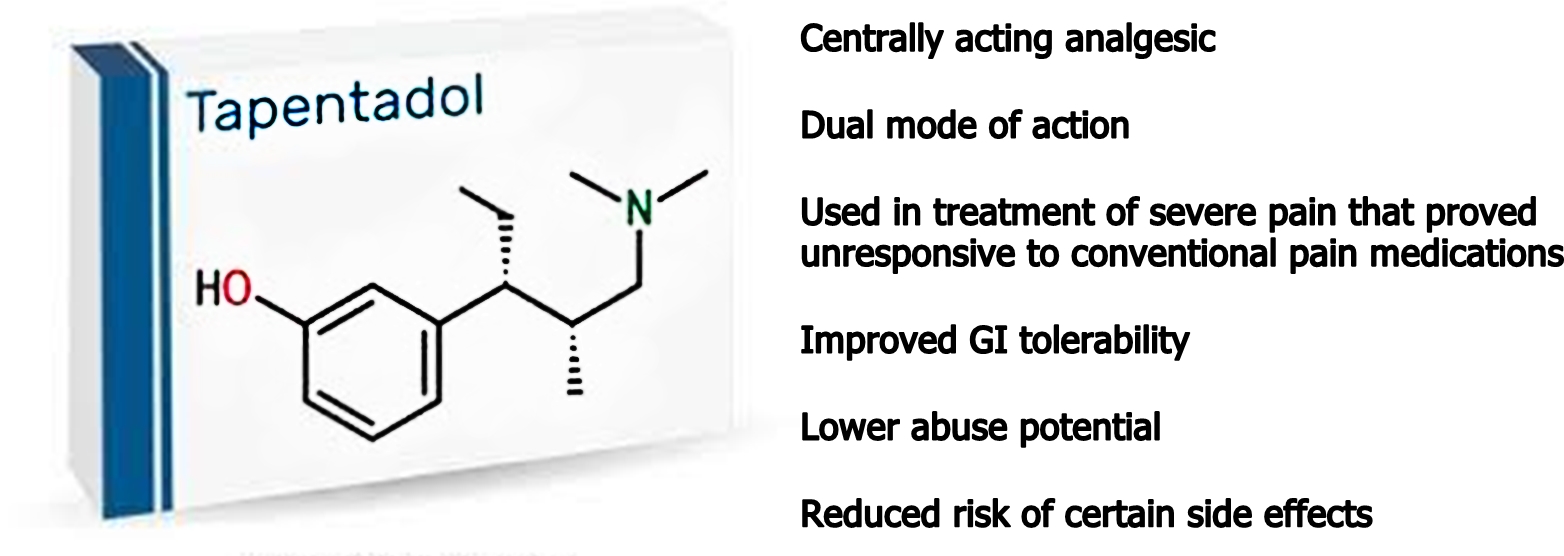Tapentadol (Generic Nucynta)

What It Is?
Tapentadol is a prescription medication classified as a centrally-acting opioid analgesic, used for the management of moderate to severe pain. It is distinctive due to its dual mechanism of action, which combines traditional opioid receptor activity with additional neurotransmitter modulation.
Mode of Action
Tapentadol operates through a dual mechanism that enhances its analgesic effects:
1. Mu-Opioid Receptor Agonism: Tapentadol binds to mu-opioid receptors in the central nervous system (CNS), specifically in the brain and spinal cord. These receptors are crucial in the pain pathway, and their activation leads to a reduction in pain perception. Unlike some opioids, Tapentadol’s binding affinity and pharmacological profile may offer different efficacy and side effect profiles.
2. Norepinephrine Reuptake Inhibition: In addition to its opioid receptor activity, Tapentadol inhibits the reuptake of norepinephrine, a neurotransmitter involved in modulating pain. This inhibition enhances the analgesic effects by influencing pain perception pathways beyond opioid receptor activation. It is particularly effective in managing neuropathic pain, which is often resistant to traditional opioids alone.
Benefits
1.) Dual Mechanism of Action: Tapentadol’s unique dual action provides effective pain relief by both activating opioid receptors and modulating norepinephrine levels. This makes it particularly effective in managing various types of pain, including both nociceptive (related to tissue damage) and neuropathic (related to nerve damage) pain.
2.) Reduced Risk of Certain Side Effects: Compared to other opioids, Tapentadol may offer a favorable side effect profile, with a potentially lower incidence of some common opioid-related issues like severe constipation and sedation. Its norepinephrine reuptake inhibition can also contribute to improved pain relief with a reduced risk of tolerance.
3.) Effective for Neuropathic Pain: The norepinephrine reuptake inhibition aspect of Tapentadol is beneficial in treating neuropathic pain, a type of pain caused by nerve damage or dysfunction. This makes it a valuable option for patients who may not respond adequately to traditional opioids.
4.) Lower Abuse Potential: Although Tapentadol is an opioid, its unique mechanism may lead to a lower potential for abuse and addiction compared to other opioids. This is partly due to its balanced effects on both opioid and non-opioid pathways.
Uses
Tapentadol is prescribed for:
1.) Acute Pain: Effective for managing pain associated with surgical procedures, injuries, or other short-term pain conditions. Its rapid onset and dual action make it suitable for these scenarios.
2.) Chronic Pain: Particularly useful for managing chronic pain conditions, including neuropathic pain. Its dual mechanism provides a comprehensive approach to pain relief that may be more effective for certain chronic pain syndromes.
Side Effects
As with all medications, Tapentadol can cause side effects. Common side effects include:
1.) Nausea and Vomiting: Typical with opioid medications, though often manageable with supportive care.
2.) Dizziness and Drowsiness: May impair cognitive and motor functions, affecting daily activities.
3.) Constipation: Opioid-induced constipation, though potentially less severe than with some other opioids.
4.) Headache: Some patients may experience headaches.
Serious side effects include:
– Respiratory Depression: Tapentadol can cause a reduction in breathing rate, particularly in high doses or when combined with other CNS depressants.
– Dependence and Withdrawal: Long-term use can lead to physical dependence, with withdrawal symptoms if the medication is abruptly discontinued.
Allergic Reactions: Severe allergic reactions are rare but possible, including symptoms like rash, itching, and swelling.
Conclusion
Tapentadol is a notable opioid analgesic due to its dual mechanism of action, combining mu-opioid receptor agonism with norepinephrine reuptake inhibition. This dual action enhances its effectiveness in managing both nociceptive and neuropathic pain, offering significant benefits over traditional opioids. Its potentially reduced side effect profile and lower abuse potential make it a valuable option in pain management.
